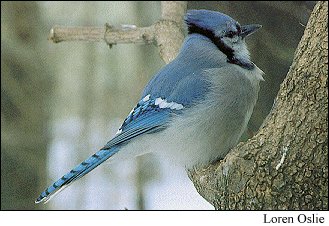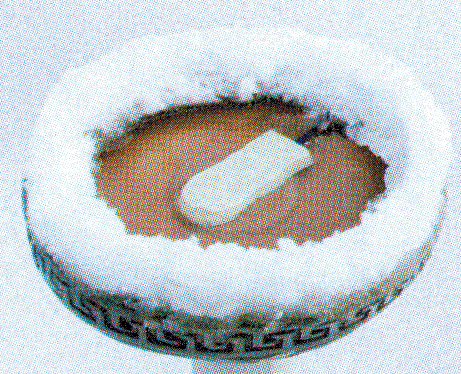Echter's Home
Bird Feeding - Colorado Style
 Few things in life are as relaxing and enjoyable as
watching birds in winter. Colorado provides a unique environment for up
to 400 different species of birds.
Few things in life are as relaxing and enjoyable as
watching birds in winter. Colorado provides a unique environment for up
to 400 different species of birds.
Many of these birds migrate through
Colorado during the fall. Many more live here year-round. You and your
family can watch birds in your own backyard by doing a few simple things make
your garden more attractive to birds. Like all living creatures, birds need three things
to survive: food, shelter, and water.
Food
Providing food for the birds is easier than you think. Like us, birds have their favorite kinds of food. Chickadees and finches,
for example, like sunflower seeds. Steller's jays and blue jays prefer
peanuts. White proso millet is the preferred food of juncos, sparrows,
and mourning doves. The favorite food of pine siskins and some kinds of
finches is the nyjer seed. Black oil sunflower seed is
our favorite seed to feed in the winter because of its high oil content.
Tidy Patio is a no-shell blend of seed so there is no mess under the feeder.
Northern flickers prefer suet cakes. Put out some peanuts in the shell, some tree nuts, or raisins for special treats and watch the birds learn to come for them within minutes.
Feeders
Bird
feeders come in many different shapes and sizes. Some feeders can be mounted
on a pole. Others can hang from trees or shrubs, or from a porch overhang,
or bracket on the wall. Another type of bird feeder is a simple ground-level
platform made of a screen mounted on short legs. Regardless
of the type of feeder you select, be sure to place the feeder where you
can observe it from a window. Don't put it so close to the window that the
birds hit the glass periodically. Birds prefer feeders
that are placed near shrubs or trees that offer protection from predators.
When choosing a feeder, make sure you choose one that
is easy to fill and easy to clean. It should hold two or three days' worth
of seeds. Most birds feed in the early morning and again at dusk, so make
sure the feeder is full of seed. You don't want to miss the early morning
antics while enjoying your coffee!
Shelter
Birds
also need shelter from the elements and predators. Natural shelter is
provided by having a variety of shrubs and trees in your yard. When
planning your garden to attract birds and other wildlife, include a
variety of evergreen and deciduous shrubs of different shapes and
heights. You can also provide shelter by adding a bird house or
two. Bird houses can be simple or complex and come in many sizes. Hole
size is important in attracting specific kinds of birds. Make sure the
house is equipped a removable panel so it can be cleaned between uses
and a drainage hole so water doesn't collect in the house.
 Water
Water
Birds also need a year-round source of water.
You can easily provide water for birds in a birdbath or simply by
leaving a saucer full of water near the feeder. Electric de-icers can be
used to keep the water from freezing. Birdbaths also provide a safe spot
for birds to clean their feathers.
Keep it Clean
Give your birds room to feed. Crowded bird feeders quickly become
unsanitary as sick and healthy birds are pressed together. Clean off
bird droppings as needed. Scrub the feeder with water using a brush
with stiff bristles. To completely disinfect your feeders once a month
use a 10% chlorine bleach solution (1 part Clorox & 9 parts water). Soak the entire feeder in a bucket or spray it until it the surface is
soaked wet and let it sit 5 minutes. (Keep the solution off your skin
and clothing.) Then rinse with water it and let it air dry before
refilling. Keep the birds off the feeder until after it is rinsed. This
process is much easier if you have more than one feeder and you can
clean one and leave the other in use. Keep your seed dry and away from
rodents.
By following these easy guidelines, you can attract birds to your garden and be rewarded with years of relaxing entertainment.